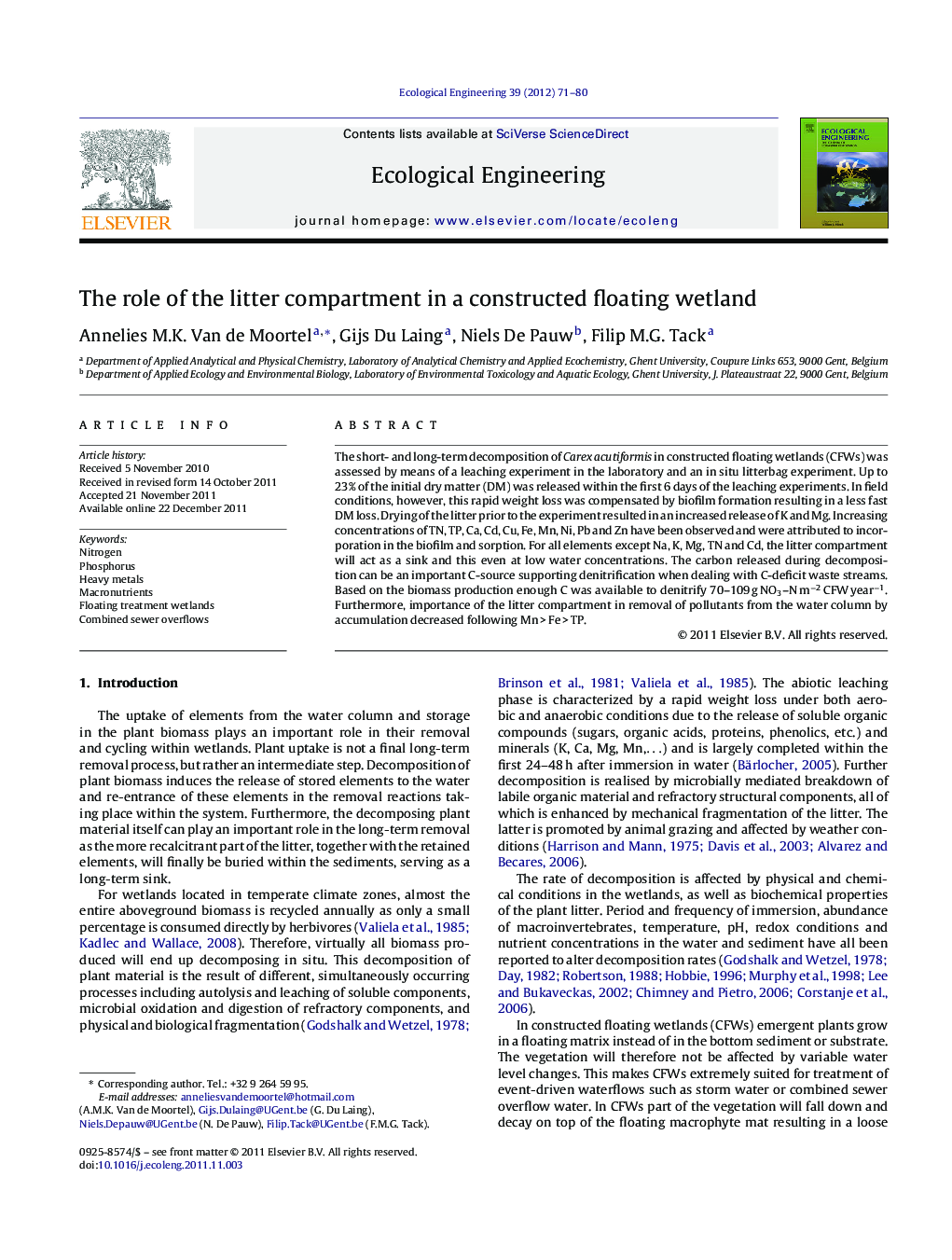| Article ID | Journal | Published Year | Pages | File Type |
|---|---|---|---|---|
| 4390209 | Ecological Engineering | 2012 | 10 Pages |
The short- and long-term decomposition of Carex acutiformis in constructed floating wetlands (CFWs) was assessed by means of a leaching experiment in the laboratory and an in situ litterbag experiment. Up to 23% of the initial dry matter (DM) was released within the first 6 days of the leaching experiments. In field conditions, however, this rapid weight loss was compensated by biofilm formation resulting in a less fast DM loss. Drying of the litter prior to the experiment resulted in an increased release of K and Mg. Increasing concentrations of TN, TP, Ca, Cd, Cu, Fe, Mn, Ni, Pb and Zn have been observed and were attributed to incorporation in the biofilm and sorption. For all elements except Na, K, Mg, TN and Cd, the litter compartment will act as a sink and this even at low water concentrations. The carbon released during decomposition can be an important C-source supporting denitrification when dealing with C-deficit waste streams. Based on the biomass production enough C was available to denitrify 70–109 g NO3–N m−2 CFW year−1. Furthermore, importance of the litter compartment in removal of pollutants from the water column by accumulation decreased following Mn > Fe > TP.
